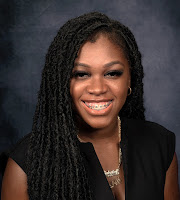Narrow or Not Amidst Recent Court Shifts?
By Priscilla Capuano
Priscilla Capuano is a graduating third-year student at Albany Law School. Prior to attending law school, she earned her bachelor’s degree from Siena College, where she majored in Philosophy and minored in Creative Arts.
While in law school, Priscilla interned at the Albany County District Attorney’s Office in the summer of 2022. She continued her work there by completing a Field Placement over the fall of 2022 and by volunteering in the spring of 2023. During the summer of 2023, Priscilla worked as a Summer Associate for Goldman Sachs. In the fall of 2023, she completed a field placement in the chambers of the Honorable Mae D’Agostino.
Priscilla was a member of Albany Law School’s Criminal Appellate Travel Team where she competed in the 2023 Herbert Wechsler National Criminal Law Moot Court Competition. She also competed in the 2023 Domenick L. Gabrielli Appellate Advocacy Moot Court Competition, where she was a finalist, and won the third best oral advocate award. She and her partner won the 2023 McGovern Senior Prize Trials.
As the Managing Editor for Production, Research, and Writing on the Journal of Science and Technology, Priscilla was involved in organizing and running the Journal's Write-on Competition in the summer of 2023. Until graduation, she is continuing her involvement in the Journal of Science and Technology and is serving as an Executive Editor for the Center of Judicial Process.
Amidst scandal, controversial decisions, and dramatic ideological shifts on the Court, Chief Justice Roberts attempts to maintain the Court’s reputation and legitimacy.
However, Roberts does not wield his former power as the deciding vote in closely divided cases. Roberts’ diminished power on the Court was hastened by the replacement of two liberal fixtures with new conservative Justices, tipping the balance of the Court to an overwhelmingly conservative majority.
While Roberts does not dominate the Court as he did in recent years, as Chief Justice, he decides who writes the majority as long as he is not in dissent. The author of the majority opinion has a profound impact on the law, and has discretion over how broadly or narrowly the Court rules. Roberts’ proclivity to render narrow rulings is now in conflict with the conservative majority’s broad and dramatic decisions. Furthermore, a non-partisan and legitimate court is not easily achieved on a Court that renders partisan and often controversial decisions.
Thus, it is questionable how Roberts will achieve his goals on the distinctly conservative Court. Although it is unlikely that Roberts will regain his former power or lead a Court that is above legitimate reproach, he can implement different strategies to maximize results that best align with his vision for the Court.
_______________________________
To read the paper, open HERE.








